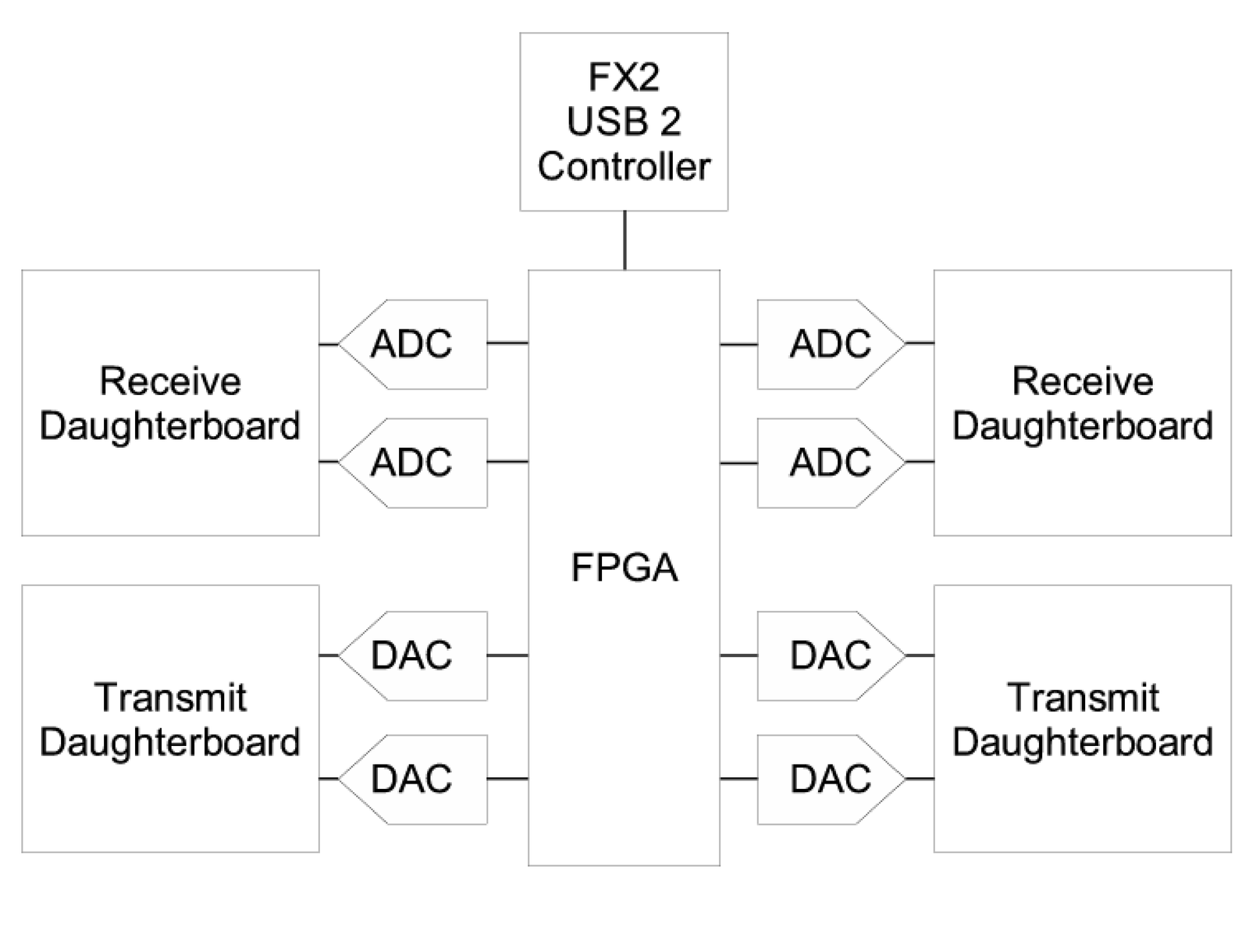B.2 GR-Based SDR Hardware (USRP, RTL-SDR Dongle, etc.)
The availability of flexible and relatively low cost platforms has been increasing and can also be explored in advanced engineering projects, for teaching at schools or self-learning. This text describes just few platforms that rely on GNU Radio. The respective communities generated great material that is freely available and the reader is invited to use this text as an introduction and pointer to the web sites and discussion groups.
A typical hardware interface can be divided in three main system parts: the analog-to-digital (ADC) / digital-to-analog (DAC) conversions; the analog tuner, capable of up/down converting signals; and finally the transport, responsible for streaming the signal to/from the converter, constrained by the stream capability () of the connection interface (typically, USB or Ethernet).
Table B.1 compares four distinct SDR hardware platforms. In the past years, the Universal Software Radio Peripheral (USRP) has been the most popular hardware used with GNU Radio. It can be purchased from National Instruments (NI) or directly from Ettus (acquired by NI). NI commercializes USRP kits that include educational material. Table B.1 includes only two models: N210 and theB100 and assumes the current prices suggested by Ettus. Nowadays, there are cheaper yet powerful alternatives to USRPs such as the Jawbreaker board developed within the HackRF project. If only a SDR receiver (without a transmitter) is useful, a DVB-T Dongle is the cheapest alternative. Table B.1 lists the Ezcap EZTV645 dongle, but there is a large number of models and a list of devices compatible with GNU Radio discussed at [ urlartl] and [ urlagra].
| U. N210 | U. B100 | Jawbreaker | EZTV645 | |
| (Hz or Msps) | ||||
| (bits) | ||||
| (GHz) | -* | -* | - | - |
| (Msps) | ||||
| Price (US$) | ||||
| Obs. | full-duplex | full-duplex | half-duplex | just receiver |
* depends on the daughter boards used.
B.2.1 Universal Software Radio Peripheral (USRP)
The Universal Software Radio Peripheral (USRP) is a hardware device conceived to work with the GNU Radio project. The large majority of the USRP is open source, including schematics and layouts, for example. Figure B.2 illustrates the USRP through a block diagram.

The USRP consists of a small motherboard containing up to four 12-bit 64M sample/sec analog-to-digital converters (ADCs), four 14-bit, 128M sample/sec digital-to-analog converters (DACs), a million gate-field programmable gate array (FPGA) and a programmable USB 2.0 controller. Each fully populated USRP motherboard supports four daughterboards, two for receive and two for transmit. RF front ends are implemented on the daughterboards. A variety of daughterboards is available to handle different frequency bands.
All ADCs and DACs are connected to the FPGA. In its original configuration, the FPGA implements digital down-converters (DDC) and cascaded integrator-comb (CIC) filters, while digital up-converters (DUC) are located in the AD9862 chips.
The USRP interfaces with the world through daughter boards, which are connected to the mentioned slots. There are several USRP daughter boards, with operating frequencies from 0 to 2.5 GHz. It is also possible to develop new daughter boards, for example, to connect baseband signals to the USRP.